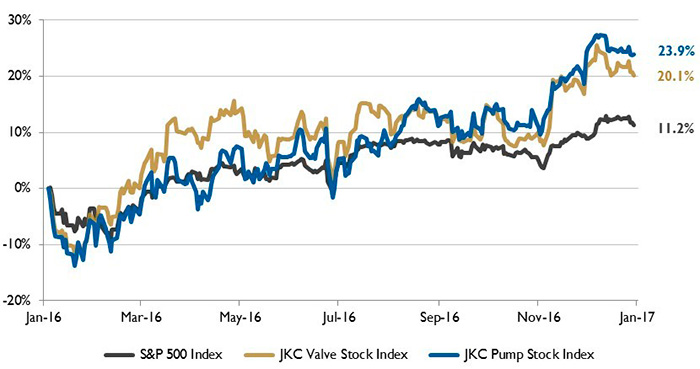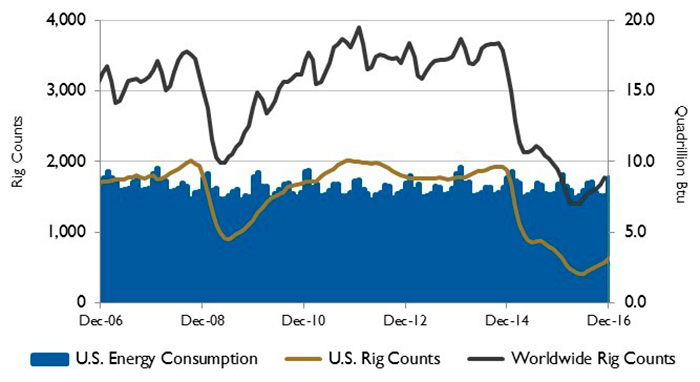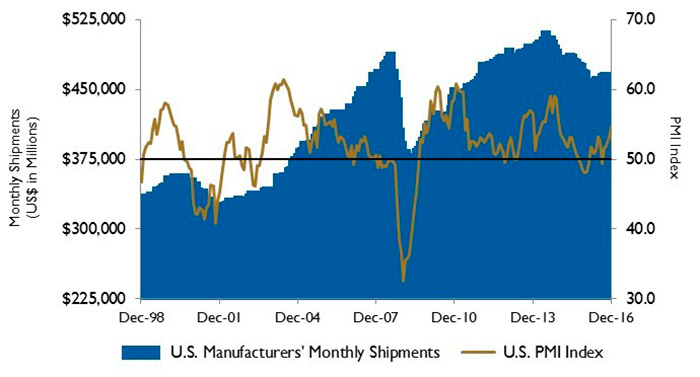Pump Market Analysis
Jordan, Knauff & Company
02/08/2017
The Jordan, Knauff & Company (JKC) Valve Stock Index was up 20.1 percent over the last twelve months, while the broader S&P 500 Index was up 11.2 percent. The JKC Pump Stock Index increased 23.9 percent for the same period.1 The Institute for Supply Management’s Purchasing Managers’ Index (PMI) increased to a two-year high of 54.7 percentage points in December. The PMI index was at 48.0 level a year earlier in December 2015. Production and new orders surged to above 60 percentage points with production increasing 4.3 points and new orders growing 7.2 points over the prior month. Both of these measures exceeded 60 percentage points for the first time since November 2014.
 Figure 1. Stock indices from January 1, 2016 to December 31, 2016 Source: Capital IQ and JKC research. Local currency converted to USD using historical spot rates. The JKC Pump and Valve Stock Indices include a select list of publicly traded companies involved in the pump and valve industries weighted by market capitalization.
Figure 1. Stock indices from January 1, 2016 to December 31, 2016 Source: Capital IQ and JKC research. Local currency converted to USD using historical spot rates. The JKC Pump and Valve Stock Indices include a select list of publicly traded companies involved in the pump and valve industries weighted by market capitalization. Figure 2. U.S. energy consumption and rig countsSource: U.S. Energy Information Administration and Baker Hughes Inc.
Figure 2. U.S. energy consumption and rig countsSource: U.S. Energy Information Administration and Baker Hughes Inc. Figure 3. U.S. PMI and manufacturing shipmentsSource: Institute for Supply Management Manufacturing Report on Business and U.S. Census Bureau
Figure 3. U.S. PMI and manufacturing shipmentsSource: Institute for Supply Management Manufacturing Report on Business and U.S. Census Bureau- The S&P Return figures are provided by Capital IQ.

